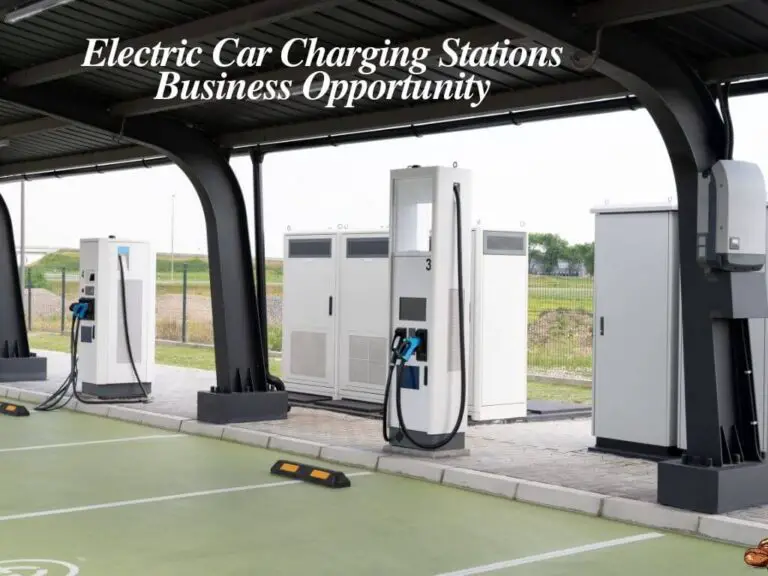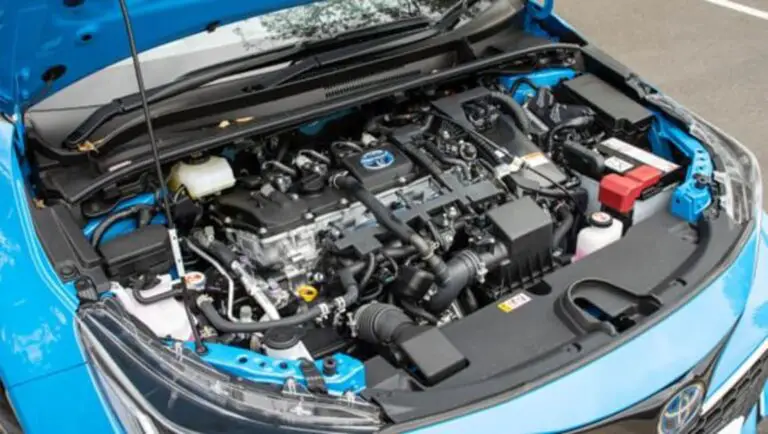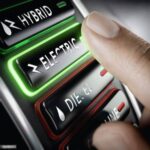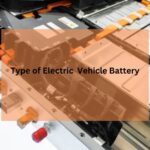Hi there! In today’s world, electric cars have become more popular and widely used as a means of transportation. One of the most important aspects of owning an electric car is ensuring that it has enough battery charge to keep it moving. This is where electric car chargers come in.
Understanding electric car charger types is crucial for every electric car owner or anyone looking to purchase an electric vehicle. The type of charger you choose will have a significant impact on how quickly and efficiently your car’s battery can be charged.
In this blog post, we will discuss the various types of electric car chargers, their characteristics, specifications, pros and cons, and suitable situations for each type. By the end of this post, you’ll have a better understanding of electric car chargers and be able to make informed decisions about which one to choose based on your specific needs.
So, let’s dive in and learn more about electric car chargers!
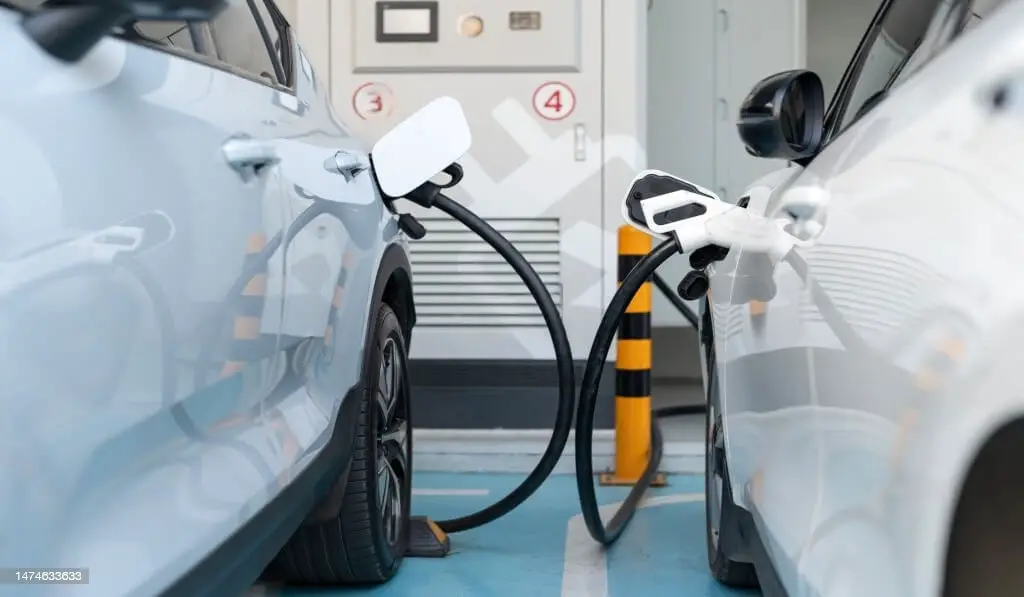
Types of Electric Car Chargers
Now that we’ve established why it’s important to understand electric car chargers, let’s take a closer look at the different types available.
There are primarily three types of electric car chargers: Level 1, Level 2, and Level 3. These levels indicate the charging rate and the voltage required to charge the battery.
- Level 1 chargers are the most basic type of charger and typically come with your electric car. They are designed to be plugged into a standard 120-volt household outlet and can take up to 20 hours to fully charge your vehicle’s battery. Level 1 chargers are relatively inexpensive, but they are not the most efficient way to charge your car.
- Level 2 chargers, on the other hand, require a 240-volt outlet and can charge your car up to six times faster than Level 1 chargers. They are the most commonly used chargers in public charging stations and are often installed in homes and businesses. Level 2 chargers are more expensive than Level 1 chargers, but they are a more efficient way to charge your car.
- Level 3 chargers, also known as DC Fast Chargers, are the fastest charging option available. They require a 480-volt power source and can charge your electric car battery up to 80% in just 30 minutes. Level 3 chargers are commonly found in public charging stations, but they are the most expensive option and require specialized installation.
Apart from these three levels, there are other types of chargers available, including wireless charging and solar charging. However, these are not as commonly used as the Level 1, 2, and 3 chargers.
Now that you understand the different types of electric car chargers and their charging capabilities, it’s easier to choose which type is best for your needs. In the next section, we’ll take a closer look at the characteristics, specifications, pros, and cons of each charger type to help you make an informed decision.
Level 1 Electric Car Charger
Let’s start our deep dive into each type of electric car charger with Level 1 chargers.
So, we’ve talked about the different levels of electric car chargers, and now it’s time to dive into the specifics of each level. Let’s start with Level 1 chargers.
What is a Level 1 charger?
A Level 1 charger is the most basic type of electric car charger. It is typically included with your electric car purchase and can be plugged into a standard 120-volt household outlet.
What are the characteristics and specifications of a Level 1 charger?
- Charging speed: Level 1 chargers have the slowest charging speed among the different charger levels. They can provide about 3-5 miles of range per hour of charging.
- Voltage: A Level 1 charger requires a 120-volt outlet to operate.
- Charging time: It can take up to 20 hours to fully charge your electric car battery using a Level 1 charger.
- Portability: Since Level 1 chargers are relatively small and lightweight, they are portable and can be taken with you anywhere.
- Cost: Level 1 chargers are the most affordable among the different charger levels. As they usually come with the electric car, you don’t need to purchase them separately.
What are the pros and cons of a Level 1 charger?
Pros:
- Affordable: Level 1 chargers are the cheapest among the different charger levels.
- Portable: Due to their small size and weight, they are easy to transport and can be used anywhere with a standard household outlet.
- No installation required: Level 1 chargers can be used without any additional installation, making them a convenient option.
Cons:
- Slow charging speed: Level 1 chargers have the slowest charging speed compared to Level 2 and Level 3 chargers.
- Not suitable for long-distance driving: If you plan to take long trips regularly, a Level 1 charger may not provide enough range to meet your needs.
- Limited range: Due to their slow charging speed, Level 1 chargers may not provide enough range for daily commutes and longer trips.
What are the suitable situations for using a Level 1 charger?
- Level 1 chargers are best for people who have short commutes and use their electric cars for daily errands.
- They are also suitable for those who live in apartments or condos where a Level 2 charger installation is not possible.
- Level 1 chargers can also be used as a backup charging option in case of emergencies or power outages.
In summary, a Level 1 charger is the most basic and affordable electric car charger available. While it’s not the fastest or most efficient option, it’s a great starting point for those new to electric cars or who have short commutes.
Level 2 Electric Car Charger
If you’re looking for a faster and more efficient way to charge your electric car, a Level 2 charger might be the perfect solution for you.
Definition of Level 2 Charger
Level 2 chargers are designed to be installed in homes, businesses, and public charging stations. They require a 240-volt outlet and provide charging speeds that are up to six times faster than Level 1 chargers.
Characteristics and Specifications of Level 2 Charger
Level 2 chargers come with a variety of characteristics and specifications that make them more efficient than Level 1 chargers. Here are some of the key features of Level 2 chargers:
- Charging Time: Depending on the battery size and the charging capacity of your electric vehicle, Level 2 chargers can take anywhere from a few hours to overnight to fully charge your car’s battery.
- Charging Rate: Level 2 chargers typically have a charging rate of 3.3 kW to 19.2 kW, making them much faster than Level 1 chargers.
- Installation: Level 2 chargers require professional installation, which can be done by a certified electrician. They also require a 240-volt outlet, which may need to be installed if your home or business doesn’t already have one.
Pros and Cons of Level 2 Charger
Like any other product, Level 2 chargers have their own set of advantages and disadvantages. Here are some of the pros and cons of using a Level 2 charger:
Pros:
- Fast charging speeds: Level 2 chargers are significantly faster than Level 1 chargers, allowing you to charge your car in a shorter amount of time.
- Versatility: Level 2 chargers can be used in a variety of settings, including homes, businesses, and public charging stations.
- Cost-effective: Level 2 chargers are more expensive than Level 1 chargers, but they are more cost-effective in the long run since they allow you to charge your car more efficiently.
Cons:
- Installation: Level 2 chargers require professional installation, which can be costly and time-consuming.
- Upfront cost: The upfront cost of a Level 2 charger is higher than that of a Level 1 charger.
Suitable Situations for Using Level 2 Charger
Level 2 chargers are a great option for anyone who wants to charge their electric vehicle quickly and efficiently. Here are some situations where a Level 2 charger might be a suitable option:
- Home Charging: If you own an electric vehicle and want to charge it at home, a Level 2 charger is a great option.
- Business Charging: If you own a business and want to provide charging stations for your employees or customers, a Level 2 charger can help you do that efficiently.
- Public Charging Stations: Level 2 chargers are commonly found in public charging stations, making them a convenient option for people who need to charge their vehicles while they’re out and about.
By understanding the characteristics, specifications, and pros and cons of Level 2 chargers, you can make an informed decision about whether this type of charger is the right choice for your electric vehicle.
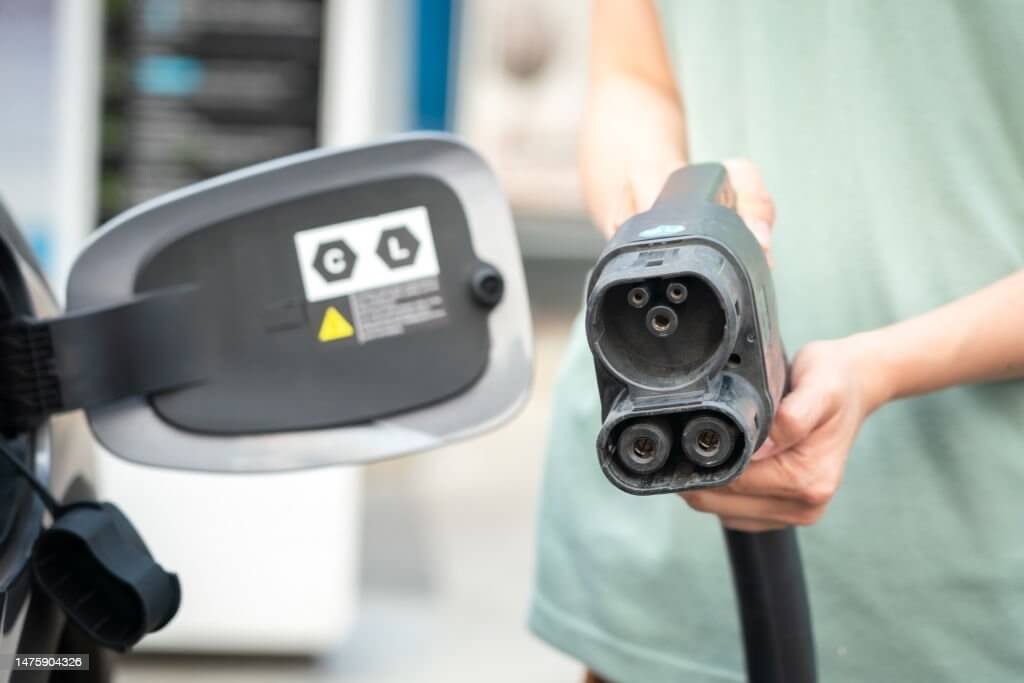
DC Fast Charging (Level 3)
If you’re looking for the fastest charging option, then DC Fast Charging, also known as Level 3 charging, is the way to go. These chargers require a 480-volt power source and can charge your electric car battery up to 80% in just 30 minutes.
Here are the characteristics and specifications of DC Fast Charging:
- Charging Rate: Up to 350 kW
- Voltage Required: 480 Volts
- Charge Time for 80% Battery: 30 minutes
- Connector Type: CCS1 or CHAdeMO
Now, let’s take a look at the pros and cons of using a DC Fast Charging (Level 3) charger:
Pros:
- Fastest charging option available
- Convenient for long-distance travel
- Can charge up to 80% in just 30 minutes
Cons:
- Most expensive charging option
- Requires specialized installation
- Not suitable for everyday use due to the high cost
Suitable Situations for Using DC Fast Charging (Level 3) Charger:
- Long-distance travel
- Emergency situations when you need to quickly charge your vehicle
- When you don’t have access to other charging options
While DC Fast Charging (Level 3) is the fastest charging option available, it’s also the most expensive and requires specialized installation. It’s not the most practical option for everyday use, but it’s convenient for long-distance travel and emergency situations when you need to quickly charge your vehicle.
Level 1 vs Level 2 vs Level 3 charging
Sure! Here’s a comparison table of Level 1, Level 2, and Level 3 electric car chargers:
| Level 1 Charging | Level 2 Charging | Level 3 Charging | |
| Voltage required | 120V | 240V | 480V |
| Average charging time* | 8-20 hours | 4-8 hours | 30-45 minutes |
| Charging speed | Up to 5 miles per hour of charging | Up to 25 miles per hour of charging | Up to 150 miles in 30 minutes of charging |
| Cost of charger | $300-$600 | $500-$1,200 | $10,000-$50,000 |
| Installation cost | $0-$300 | $300-$1,200 | $3,000-$10,000 |
| Suitable for | Home use | Home and public use | Public use or long-distance travel |
*Note: charging times may vary depending on the battery size and the charger’s output.
This table provides a quick comparison of the three types of electric car chargers based on voltage required, charging time, charging speed, cost of charger, installation cost, and suitable use cases. It’s important to note that Level 3 charging is typically reserved for public charging stations and long-distance travel, as it requires specialized equipment and is the fastest but also the most expensive option. Level 1 and Level 2 chargers are suitable for home use and public charging stations, with Level 2 being the most commonly used option.
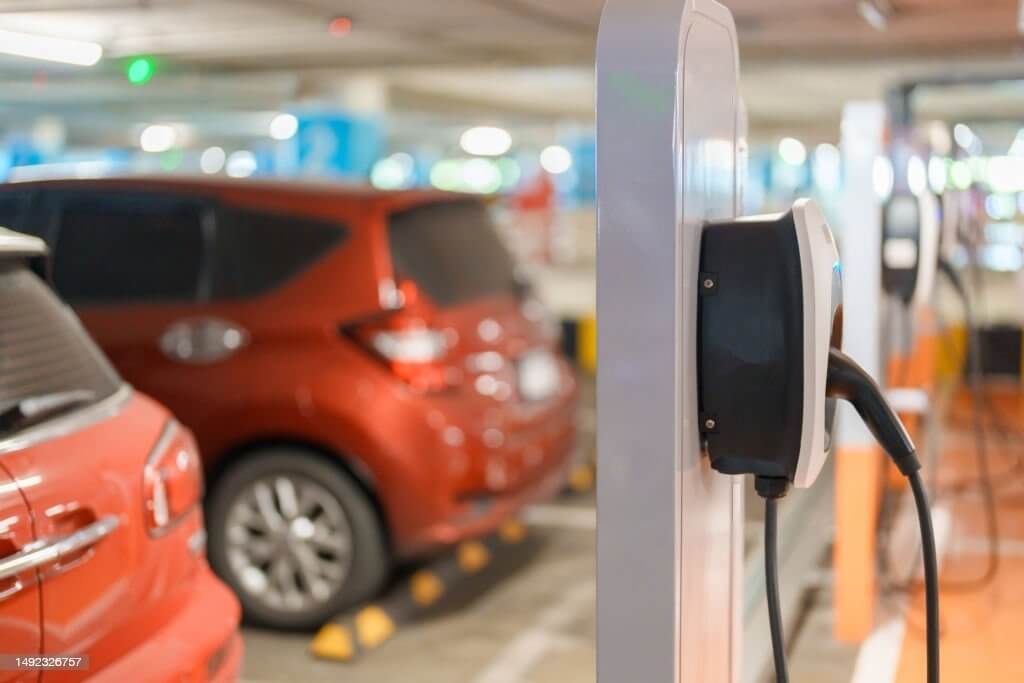
Electric Car Charging Stations
Electric car charging stations are an essential infrastructure that enables drivers to charge their electric vehicles (EVs) conveniently. As electric cars continue to gain popularity, the need for charging stations is also increasing. In this section, we’ll discuss the different types of electric car charging stations and their features.
Types of Electric Car Charging Stations
- Level 1 Charging Stations: Level 1 charging stations are the most basic type of charging station, and they use a 120-volt AC plug. They’re typically included with your electric car purchase and can be plugged into a standard household outlet. These chargers are relatively slow and can take up to 20 hours to fully charge an electric car. Level 1 charging stations are best for overnight charging at home or at work.
- Level 2 Charging Stations: Level 2 charging stations require a 240-volt AC plug and provide faster charging than Level 1 chargers. They’re commonly found in public charging stations and can be installed in homes and businesses.
Level 2 charging stations can charge an electric car up to six times faster than Level 1 chargers. They are the most commonly used charging stations and are suitable for charging your electric car when you’re out and about.
- Level 3 Charging Stations: Level 3 charging stations, also known as DC fast chargers, provide the fastest charging rates and use a 480-volt DC plug. They’re commonly found in public charging stations and can charge an electric car battery up to 80% in just 30 minutes.
However, they’re expensive to install and operate, so they’re not as common as Level 1 and Level 2 chargers. Level 3 charging stations are best for long-distance travel and for electric car owners who need a quick charge.
Benefits of Using Public Charging Stations
- Convenience: Public charging stations provide electric car drivers with convenient charging options while on the go. They’re located in public spaces like shopping malls, parking lots, and along highways, so you can easily charge your car while you run errands or take a break during a long drive.
- Accessibility: Public charging stations are becoming increasingly accessible as they are being installed in more locations across the country. This makes it easier for electric car drivers to find charging stations wherever they go.
- Range Anxiety Reduction: Range anxiety is a common concern among electric car drivers. Public charging stations provide reassurance that you can charge your car if you’re running low on battery power, reducing range anxiety and making electric cars a more viable transportation option.
Electric car charging stations are a vital part of the infrastructure that enables drivers to use electric vehicles as their primary mode of transportation. Understanding the different types of charging stations and their features can help you choose the best charging option for your needs. Public charging stations offer many benefits, including convenience, accessibility, and range anxiety reduction.
Electric Car Charger Types for Home
If you own an electric car, having a home charging station can provide convenience and cost savings. In this section, we’ll explore the different types of electric car chargers for home and their features.
There are two main types of electric car chargers for home: Level 1 and Level 2.
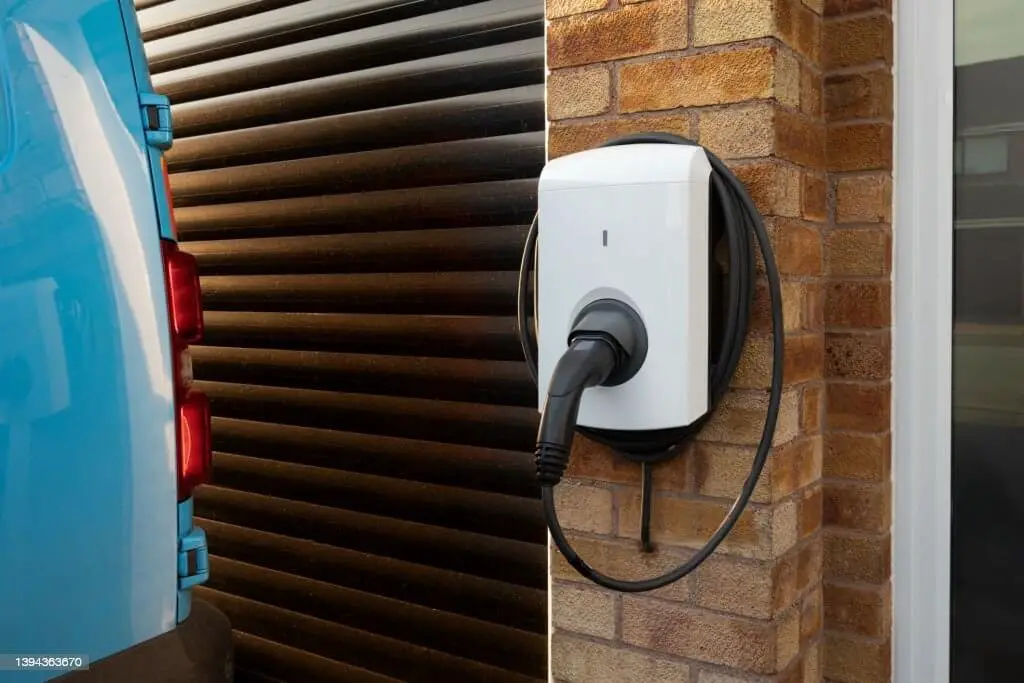
Level 1 Charger for Home
A Level 1 charger for home is the same type of charger that comes with your electric car. It can be plugged into a standard 120-volt household outlet and takes up to 20 hours to fully charge your vehicle’s battery. While it’s the least expensive option, it’s not the most efficient way to charge your car.
Level 2 Charger for Home
A Level 2 charger for home requires a 240-volt outlet and can charge your car up to six times faster than a Level 1 charger. It’s the most commonly used charger for home charging and is often installed in homes and businesses. A Level 2 charger is more expensive than a Level 1 charger, but it’s a more efficient way to charge your car.
Features of Electric Car Chargers for Home
Electric car chargers for home can come with various features, depending on the manufacturer and model. Some common features include:
- WiFi Connectivity: allows you to remotely monitor and control your home charger through a mobile app.
- Smart Charging: automatically adjusts the charging rate based on your car’s battery level and the electricity rate to optimize charging time and cost.
- Safety Features: includes surge protection, overcharge protection, and ground fault protection to ensure safety during charging.
- Durability: weather-resistant and durable construction for outdoor use.
Benefits of Using a Home Charger
There are several benefits to having a home charger for your electric car, including:
- Convenience: no need to visit a public charging station or wait in line to charge your car.
- Cost Savings: home charging is usually cheaper than public charging stations and eliminates the need for gas fill-ups.
- Time-Saving: faster charging times with a Level 2 charger, allowing you to spend less time waiting for your car to charge.
Disadvantage of home charging
- Initial cost: While using a home electric car charger can save money in the long run, the initial cost of purchasing and installing the charger can be significant.
- Installation: Installing a home charger can be a complex process that requires a professional electrician, which adds to the cost.
- Limited charging speed: Home chargers typically have a lower charging rate than public charging stations, so it may take longer to fully charge your electric car.
- Limited range: If you’re driving long distances, relying solely on a home charger may not be enough to maintain your vehicle’s charge level.
- Compatibility issues: Different electric car models may require different types of chargers, so it’s important to ensure that the charger you purchase is compatible with your vehicle.
- Accessibility: If you live in an apartment or have limited access to an electrical outlet, it may be difficult to install a home charger.
Investing in an electric car charger for your home can provide convenience, cost savings, and time-saving benefits. With the different types and features available, you can choose the one that best suits your needs and lifestyle.
Charging Port Compatibility
Hey there, have you ever wondered what kind of charging port your electric car has and if it’s compatible with different charging stations? In this section, we’ll be discussing the different types of charging ports and their compatibility with various charger types.
There are three main types of charging ports: CHAdeMO, CCS, and Tesla. Here’s a brief overview of each:
- CHAdeMO: This charging port type is used mainly by Japanese and Korean car manufacturers. It’s a fast charging port that can charge an electric car up to 80% in just 30 minutes.
- CCS: This charging port type is used by European and American car manufacturers. It combines the charging port and the communication protocol, making it more efficient and compact.
- Tesla: This charging port type is exclusive to Tesla cars. It’s a proprietary charging system that requires a Tesla-specific adapter for compatibility with other charging stations.
Now, let’s talk about charging port compatibility with different charger types. Here’s a breakdown of the compatibility between charging port types and charger types:
- CHAdeMO: Compatible with Level 3 DC Fast Chargers.
- CCS: Compatible with both Level 2 and Level 3 chargers.
- Tesla: Compatible with Tesla Superchargers and Level 2 chargers with a Tesla-specific adapter.
It’s essential to ensure that your electric car’s charging port is compatible with the charging station you plan to use. Otherwise, you won’t be able to charge your vehicle properly. In case you’re not sure about your car’s charging port type and its compatibility with different charging stations, it’s best to consult your car’s manual or contact the manufacturer for more information.
Final Thought
In conclusion, we have covered the different types of electric car chargers available in the market, including Level 1, Level 2, and Level 3 chargers. Each charger type has its own set of characteristics, specifications, and pros and cons. It is important to understand your electric car’s charging capabilities and your personal charging needs before choosing the right charger type.
Additionally, we discussed the benefits of using public charging stations and home chargers, as well as the importance of understanding charging port compatibility with different charger types.
Choosing the right electric car charger can save you time and money, and ensure that your vehicle’s battery is charged efficiently. So, take the time to research and understand the different charger types available, and choose the one that best suits your needs. Happy charging!
FAQ’s
What are Type 1 and Type 2 EV Chargers?
Type 1 and Type 2 EV chargers are standardized connectors for electric vehicles. Type 1 (SAE J1772) is common in North America, featuring a 5-pin design for Level 1 and 2 charging. Type 2 (IEC 62196-2) is prevalent in Europe and gaining worldwide use, with a 7-pin design for broader charging speeds, including single-phase or three-phase AC, and even direct current (DC) charging. These standards ensure safe and efficient charging at home, workplaces, and public stations, facilitating the global transition to electric mobility.
What is the difference between Type 1 Type 2 and Type 3 EV chargers?
Type 1 (SAE J1772) and Type 2 (IEC 62196-2) are common EV charging standards, differing in their regional adoption and design: Type 1 is mainly used in North America, while Type 2 is prevalent in Europe and increasingly globally. Both support Level 1 and 2 AC charging.
Type 3 is not a widely recognized standard. In some contexts, it refers to a specific DC fast charging standard used by Renault (formerly known as Combo 2), designed for fast charging in Europe. It combines AC and DC pins for flexibility. However, this is not as widespread as Type 1 or Type 2 and is less commonly found in the charging infrastructure. Always check your EV’s compatibility with the charging station before use.
Is J1772 a fast charger?
No, J1772 (Type 1) is not considered a fast charger. It is a standard connector primarily used for Level 1 and Level 2 charging, which are lower-power charging options commonly found at homes, workplaces, and public charging stations.
J1772 connectors are designed for regular overnight charging and are not suitable for rapid charging. For fast charging, higher-power standards such as CCS (Combo Charging System) for DC fast charging or CHAdeMO are used, which can deliver a significant amount of charge in a short time, enabling longer trips with shorter charging stops.
What are the different types of EV Chargers?
Several types of electric vehicle (EV) chargers cater to different charging needs:
Level 1 Charger: The most basic, uses a standard household outlet (120V AC) for slow charging, typically overnight.
Level 2 Charger: Faster than Level 1, uses higher voltage (240V AC) and requires installation. Common for home charging and public stations.
DC Fast Charger (CCS, CHAdeMO): Provides rapid charging by delivering high-voltage DC power directly to the vehicle’s battery. CCS (Combo Charging System) and CHAdeMO are two common standards.
Tesla Supercharger: Proprietary fast chargers for Tesla vehicles, providing high-speed charging for Tesla owners.
Each type serves various use cases, balancing charging speed, convenience, and infrastructure availability.

